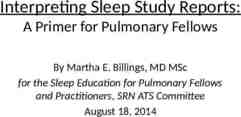State Oral Health Improvement Plan Strategy Indicators:
25 Slides7.00 MB

State Oral Health Improvement Plan Strategy Indicators: A Conceptual Framework Association of State and Territorial Dental Directors (ASTDD)

Figure 1. State Oral Health Improvement Plan Components* identify and engage establish a planning process disseminate results develop and implement a workplan develop objectives, strategies, and measures collect or analyze data Strategies establish priorities set an agenda

Figure 2. Example Steps: Goals, Objectives, Strategies, Activities GOAL “To improve access to child oral health care” OBJECTIVES “To increase the % of children aged 2-3 who have seen a dentist by 2021” STRATEGIES 1. Medicaid Reform 2. Professiona l Education ACTIVITIES 1. Advocate for reimbursem ent 2. Dental CE Courses

To identify predominant SOHIP strategies with example activities Learning Objectives To classify SOHIP strategies into appropriate categories of dental public health core functions and essential public health services To utilize the updated State Oral Health Plan Comparison Tool

Figure 3. State Oral Health Improvement Plan Timeline of Updates

Background The process of developing a SOHIP varies widely as does their final content. This may be attributed to state oral health program capacity authority resources composition

Background State plans do not subscribe to a common set quality measures. Neither: structural (e.g., strategies) and process (e.g., activities) measures Uniform quality measures can provide a standard framework to develop a SOHIP, improve quality, monitor progress, or compare with other states.

Background Purpose review the most recent SOHIPs, identify, analyze, describe, organize, and report the most frequent SOHIP strategies (and related activities), and to categorize strategies into a conceptual framework dental public health core function dental public health essential service

Methods Qualitative Content Analysis (QCA) NVivo 12 (QSR International Pty Ltd. Version 12, 2018) Thematic Analysis included identification, interpretation, and categorization of meaningful patterns, or ‘themes’, present throughout the data. Themes generated an understanding of common strategies used by states to address goals or objectives. Strategies were identified through an iterative process of data familiarization; data coding; thematic generation, review, labeling and defining.

Of the 50 states and D.C., 47 furnished a State Oral Health Improvement Plan Results 21 state plans were updated in the past 5 years 23 significant state strategy themes emerged

Results (Plans) SIMILARITIES Target populations Funding Intervention levels and Time Period settings Stakeholder engagement Priorities Evidence DIFFERENCES Outcomes

Results (Objectives / Strategies / Activities) OBJECTIVES specificity – rather than direct and detailed, were broad or vague; measurability – rather than quantifiable, were ambiguous; feasibility – rather than practical, were aspirational; or timeliness – rather than timebound, were open STRATEGIES ACTIVITIES SOHIP strategies differed according to: use, definition, and application along with ensuing activities. Plans also varied among activities and implementation, and whether they were scalable, sustainable, or impactful. Strategy composition tended to waver between extremes as global - and risked oversimplifying focus - or narrow - and risked missing opportunities.

Table1. State oral health strategies and definitions, grouped according to relevant domain of Dental Public Health Core Function and Essential Dental Public Health Service StateOral Health Strategy Operational Definition Surveillance and Monitoring Any component of a plan that aims to collect, analyze, or interpret state population oral health data for purpose of planning, implementing, or evaluating dental public health practice. Determinants of Oral Health Any component of a plan that aims to address the multiple determinants of oral health through awareness, adjustment, assistance, alignment, or advocacy. Public Oral Health Communication Any component of a plan that aims to disseminate information to the public for the purpose of preventing oral disease or promoting oral health. Coalitions / Partnerships Any component of a plan that aims to encourage the establishment or support, of collaboration and partnerships between different individuals and groups who promote state oral health. Advocacy Any component of a plan that aims to create, or support, individuals, groups, programs, and policies that address oral health at the state level. Healthy People Oral Health Objectives Any component of a plan that aims to utilize ODPHP Healthy People objectives to improve a state's population oral health. Medicaid/Managed Care Any component of a plan that aims to improve the function of Medicaid (i.e. quality or financing) or managed care within a state. Oral Health Grants Any component of a plan that aims to support or increase the financial viability of oral health care programs. Evaluation (Policy and Programs) Any component of a plan that developments, implements, or promotes assessment methods for state oral health-related policies. State Oral Health Laws and Regulations Any component of a plan that aims to oversee laws and regualtions that govern the practice of dentistry. Access to Oral Health Care Any component of a plan that aims to facilitate the public’s attainment of dental services Cultural Competency Any component of a plan that aims to promote culturally competent oral health care. Integration of Health Services Any component of a plan that aims to integrate health and oral health services for the purpose of enhanced care continuity and quality. Professional Education (Dental or Non-Dental) Any component of a plan that aims to develop, implement, or evaluate oral health education for a state’s dental or non-dental professionals. Oral Health Workforce Any component of a plan that aims to improve recruitment, retention, or capacity of a state’s oral health workforce. Fluoride Any component of a plan that aims to expand public access and exposure to fluoride for the purpose of preventing dental decay. Oral Cancer Any component of a plan that aims to address the oral health consequences of oral cancer. Dental Safety Net Any component of a plan that aims to improve the provision of dental services for underserved or at-risk populations among dental public health settings including Federally Qualified Health Centers, dental schools, dental hygiene programs, or volunteer programs. School/Community Based Programs Any component of a plan that aims to develop, implement, or evaluate oral health programs in school or community settings. Dental Sealants Any component of a plan that aims to enhance the provision of dental sealants for the purpose of preventing dental decay. Substance Abuse Prevention (Tobacco/Alcohol) Any component of a plan that aims to address the oral health consequences of substance abuse. Targeted Vulnerable Populations Any component of a plan that aims to promote the oral health of vulnerable or at-risk populations. Emerging Oral Health Topics Any component of a plan that aims to address emerging oral health topics.

Results Example Narrative (Assessment) Example Theme: Oral Health Surveillance and Monitoring. “The overarching purpose of public health surveillance is to provide actionable health information necessary for public health decision making ”

Results Example Narrative (Policy) Example Theme: Medicaid and Managed Care. ““dentist participation in the program is limited due to lower reimbursement rates, concerns with non-kept appointments, administrative burdens, and other factors.”

Results Example Narrative (Assurance) Example Theme: Medicaid and Managed Care. “a shortage of dentists practicing in low-income communities, a shortage of dentists willing to accept public insurance jobs that do not offer dental insurance, and limited or no transportation services.”

Alabama Alaska Arizona Arkansas California Colorado Connecticut Delaware D.C. Florida Georgia Hawaii Idaho Illinois Indiana Iowa Kansas Kentucky Louisiana Maine Maryland Massachusetts Michigan Minnesota Mississippi Missouri Montana Nebraska Nevada New Hampshire New Jersey New Mexico New York North Carolina North Dakota Ohio Oklahoma Oregon Pennsylvania Rhode Island South Carolina South Dakota Tennessee Texas Utah Vermont Virginia Washington West Virginia Wisconsin Wyoming Percent (%) Table3. State Oral Health Plan (SOHIP) strategy performance cross-comparison. Assessment Policy Surveillance Determinants Public Oral Coalition / Advocacy Healthy Medicaid/ Oral Health Evaluation Laws and Access to Cultural Integration Professional Oral Health and Health Partnership People Oral Managed Grants (Policy and Regulations Oral Health Competency of Health Education Workforce of Oral Comm. Health Care Programs) Care Services Health Year Monitoring Objectives 2018 2012 2019 2012 2018 2012 2019 2014 * Assurance Fluoride Oral Cancer * Dental School/ Safety Net Community Based Programs Dental Sealants 2005 2012 2004 2015 2016 2012 2016 2015 2017 2013 2007 2018 2010 2020 2013 2016 2015 2018 2011 2018 2015 2015 2015 2012 2013 2009 2014 2017 2008 2008 2015 2017 2015 2012 2014 2016 2009 2016 2013 86.2 37.1 82.3 80.3 84.3 76.4 88.2 70.5 62.7 62.7 84.3 74.5 76.4 80.3 84.3 92.1 74.5 78.4 74.5 82.3 Substance Targeted Emerging Abuse Vulnerable Oral Health Prevention Populations Topics Percent (%) 91.3 86.9 82.6 86.9 95.6 91.3 82.6 82.6 0 82.6 73.9 69.5 86.9 91.3 86.9 82.6 86.9 95.6 91.3 82.6 86.9 82.6 86.9 86.9 82.6 73.9 78.2 82.6 73.9 82.6 0 0 91.3 95.6 86.9 91.3 86.9 82.6 86.9 82.6 86.9 86.9 78.2 82.6 73.9 82.6 86.9 82.6 86.9 82.6 0 68.6 84.3 64.7 *

Results Emerging Oral Health Topics Teledentistry Opioids Dental Therapy Oral Health Integration Medicaid Waivers - Work Requirement State Dental Screening (Mandatory Requirements, i.e. Children) Perinatal Medicaid Dental Benefit Medicare Adult Benefit Student Debt / Loan Forgiveness Programs HPV and Oral Health Excise Tax - Sugar or Tobacco Antimicrobial Resistance in Dental Settings

Table4. State stragey indicator and example activity assigned according to Dental Public Health Core Function and Essential Dental Public Health Service Domain Assessment Essential Dental Public Health Service StateStrategy ExampleActivity 1. Oral Health Surveillance. i. Surveillance and Monitoring Basic Screening Survey (BSS) 2. Determinants of Oral Health. i. Determinants of Oral Health Dental School Curricula 3. Oral Health Communication. i. Public Oral Health Communication Public Service Announcements i. Coalitions Community Organization Partnerships 4. Community Engagement. ii. Advocacy State Advocacy i. Health People Objectives Healthy People Dental Objectives ii. Medicaid/Managed Care Oral Health Benefits for Uninsured iii. Oral Health Grants Federal and State Funding Sources iv. Evaluation (Policy and Programs) Oral Health Agenda and Priorities Policy Development 5. State Oral Health Policy. 6. Oral Health Laws and Regulations. i. Laws and Regulations State Dental Practice Act 7. Access to Oral Health Care. i. Access to Care Dental Benefits i. Cultural Competency Cultural Competency Education and Training ii. Integration of Health Services Referral Network iii. Professional Education Continuing Education (CE) iv. Workforce Loan Repayment i. Fluoride Community Water Fluoridation ii. Oral Cancer Oral Cancer Screening iii. Dental Safety Net Community Clinics in HPSA iv. School/Community Based Programs Children's Oral Health Literacy Program v. Sealants 3rd Grade School Sealant Program vi. Substance Abuse Tobacco Prevention Program vii. Vulnerable Populations Pregnant Women; Children; Elderly i. Emerging Topics Teledentistry; Dental Therapists 8. Oral Health Workforce. Assurance 9. 10. Oral Health Promotion and Disease Prevention. Emerging Oral Health Topics.

Figure 1. Conceptual framework for the development of a State Oral Health Plan through setting goals and objectives in relation to dental public health corefunctions, dental public health essential services and strategy indicators. State Oral Health Plan Priority Dental Public Health Core Function Assessment Goals Objectives Policy Assurance Dental Public Health Essential Service Oral Health Surveillance Determinants of Oral Health Oral Health Communication Surveillance Determinants of Oral Health Public Oral Health Campaign Community Engagement State Oral Health Policy Coalitions/Partnerships State Leadership Health People Obj Medicaid Oral Health Grants Evaluation Oral Health Laws and Regulations Access to Care Oral Health Workforce Oral Health Promotion Disease Prevention Emerging Topics Laws and Regulations Access to Care Cultural Competency Health Integration Professional Education Workforce Fluoridation Oral Cancer Safety Net School/Community Program Sealants Substance Abuse Vulnerable Populations Emerging Topics

Best Practices Report Activities Report / Tool Quality Index Analysis Future Studies Cross-State Comparisons Analysis Developing A State Oral Health Improvement Planning Guidance

Summary IMPLICATIONS for POLICY & PRACTICE Strategy indicators can be used for developing state oral health improvement plans, evaluating plan quality, comparing state oral health improvement plans, and for tracking trends over time. States without strategy indicators can adopt these validated indicators. There is value in adopting standard measures across state oral health improvement plans, public health organizations, and delivery systems.

Contact








